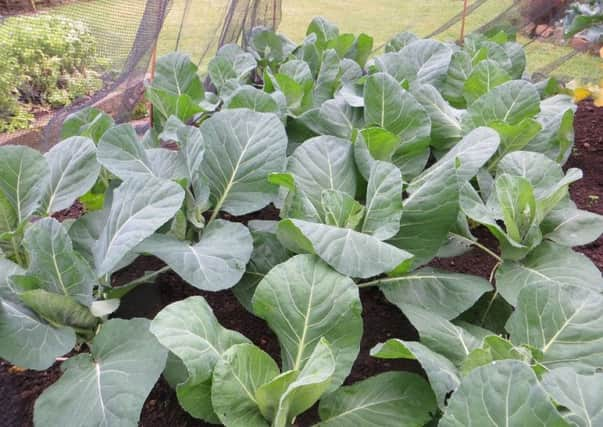Plenty of options for dealing with the pests


Some drop in on the wing and help themselves to the first taste of strawberries in a smash and grab raid. Others, in an act of daylight robbery, blend in with the leaves they eat in a thicket of foliage and skeletonise the gooseberries before our very eyes. Yet more sneak out under cover of darkness and munch away at tasty green leaves while we are asleep in our beds.
These sound like horror stories, but it’s a realistic approach, which if you’re prepared for, makes the crop taste so much sweeter.
Advertisement
Hide AdAdvertisement
Hide AdPoisonous baits and contact sprays are available for a diversity of nibbling pests, but if you’ve the slightest doubt about using them there are other options.
When planting any of the brassica family – cabbage, broccoli, sprouts – use heel and toe to make the soil stems firm and life difficult for cabbage root fly larvae. Fixing a ring of carpet around stems at soil level is another inexpensive deterrent.
In preparation for the summer appearance of cabbage white butterflies, get small mesh netting in place to stop them laying eggs on the leaves. Most are deposited on the underside, the first hint of caterpillars feeding being fragmented foliage.
Slugs and snails are always lurking somewhere in a garden, under stones or in amongst debris, and weeds play host to several pests, but avoiding piles of rubbish and keeping everywhere tidy is the first line of defence.
Advertisement
Hide AdAdvertisement
Hide AdA physical barrier of ‘strulch’ (a straw mulch), gravel, sand or similar material around a plant can make life more difficult for slugs.
Pitfall traps, simply constructed with plastic cups sunk down with the rim at soil level, also work. Add water or beer according to preference, but a university study some years ago found that they preferred lager.
Microscopic nematodes are the natural predators of slugs. They have existed in soils since time began, but only in recent years has their use become popular.
They are bought in sachets and stored in the fridge until use. A moist soil with temperature above 5C activates them. A pack to treat 40m2 lasts for six weeks.
Advertisement
Hide AdAdvertisement
Hide AdNemaslug deals solely with that pest, whereas Nemasys controls vine weevil, leatherjackets and chafer grubs.
Copper-based items conduct electricity, but in isolation we can touch them safely because the natural current is so small. However, when a solid ring, piece of tape or copper paste guards a plant, any adventurous slugs are literally and metaphorically in for a shock.